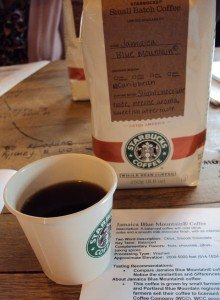 What rare Starbucks whole bean coffee shows up only about once a decade at Starbucks? It’s Jamaica Blue Mountain. This coffee launched at all the Clover designated Starbucks stores on June 29, 2010 and is available until the supplies run out. I went to a mini-tasting event for it on the 28th, held at the First and Pike Starbucks, which is when all these photos were taken. I am a fan of this coffee. I hardly have much to say about it other than “get yourself some if you can”, but I’m such a fan of the coffee, it’s a blog post.
What rare Starbucks whole bean coffee shows up only about once a decade at Starbucks? It’s Jamaica Blue Mountain. This coffee launched at all the Clover designated Starbucks stores on June 29, 2010 and is available until the supplies run out. I went to a mini-tasting event for it on the 28th, held at the First and Pike Starbucks, which is when all these photos were taken. I am a fan of this coffee. I hardly have much to say about it other than “get yourself some if you can”, but I’m such a fan of the coffee, it’s a blog post.
I want to remind my readers of a previous blog post I wrote about: Getting all the small batch coffees to more than just the 54 company-operated Clover stores. The reality is that with 16,000 stores world wide, and 6000 company-operated stores in the United States, most will never see this coffee. It’s obvious that 54 out of even 6000 is a small percentage of stores. I wrote a previous blog post which was a “proposal” to bring small batch coffees to certain designated stores, and I’d invite my readers to go back and look it over:
Sending rare coffee to all Starbucks: A proposal
However a little warning about Jamaica Blue Mountain coffee: It is possible that the price point will turn some folks off. Today, for example, I had a “short” Jamaica Blue Mountain from the Clover, and it was $4.25 for a short. That is an eight-ounce cup of black coffee for $4.25. As with ALL of the small batch coffees by Starbucks, they are only sold in half-pound sizes. This coffee retails for $40 for a half-pound.
Here’s a little information about this coffee: It is shipped to roasters in barrels rather than traditional burlap bags. This coffee has distinct citrus chocolate notes. The flavor of citrus is pronounced in it, and when I drink I definitely can detect a very clean “sparkle” to it which reminds me of something like the sparkle that “Bella Vista” coffee is famous for. Starbucks says that complementary flavors for this coffee are nuts, citrus, baking spices, and chocolate.
The coffee is grown in the Blue Mountain region of Jamaica at elevations up to 5000 feet. It is processed by a “washed” method of processing. For those who do not know, there are three methods of coffee processing: (1) Washed (2) Semi Washed and (3) Sun Dried. Let me make clear that when we talk about this “coffee processing” method, at this point I am specifically referring to method used by the farmer to remove the coffee cherry (the soft part of it) from the hard coffee bean inside. Think of the coffee bean like a peanut: two halves that split apart, but covered in a soft cherry.
Washed coffee processing
When a coffee is processed by a “washed” method (also called the “wet” method), the farmer pours all the cherries into de-pulping machine to remove the softest part of the cherry: all the cherry skin and the majority of the cherry fruit is removed. Think of it like pressing the cherries through some kind of large plates with just the bean coming out at one end. At the other end of the de-pulping machine the farmer collects the soft skin and fruit of the cherry. On many farms, this skin and fruit will later be used as compost on the farm.
In the “washed” method, next the coffee beans (now with a small amount of soft fruit on them as well as a somewhat sticky mucilage that surrounds the hard bean) are poured into moving channels of water which literally “wash” the beans free of the remaining soft substance surrounding the coffee bean. The beans are now dried, usually in the sunshine, and then placed into burlap bags (or in this case barrels) for transport to the coffee buyer.
In a previous blog post I wrote heavily about the “semi washed” processing method. I recommend that you read it again to compare the processing methods:
The Magic of Sumatra and Aged Sumatra
Unfortunately I do not have a blog post where I talk in detail about “sun dried” processing method. Once again, the three methods of processing the coffee (meaning the steps used to remove the soft cherry from the hard coffee bean inside the cherry) are (1) “Wash” (2) “Semi wash” and (3) “Sun Dried”.
Jamaica Blue Mountain coffee tasting
Turning back to the small coffee event on June 28th, it took place at the First and Pike Starbucks, which happens to be a store that has been featured numerous times in this blog. It’s a “showcase” store for Starbucks, and the place of many coffee education opportunities. Our barista, who made us the Clover cups of Jamaica Blue Mountain, was “Jeremy,” who coincidentally has been a star barista in this blog before!
Here’s a previous blog post featuring barista-Jeremy at First and Pike:
Coffee tasting: Three Region Blend
And now for fun, a few more photos from the beautiful First and Pike Starbucks, and of our barista Jeremy hard at work at the Clover making our coffee:
The boring legal part of the blog
The FTC has an amazing long and complex regulatory scheme governing bloggers and “endorsements” and “advertisers”. What it boils down to (as far as I can tell) is that Starbucks has an obligation to remind me to tell you that I got something free from them, and I have an obligation to tell you that I received free product or services related to this blog post. In summary, “StarbucksMelody” received free product or services in connection with this blog post. Ahem. I got a half pound of coffee and the chance to schmooze with a PR person from the Starbucks headquarters and a coffee-department person from the Starbucks headquarters. Also the FTC says that I can’t knowingly make any false statements in this blog post. So while I am so enthusiastic about this coffee that I want to tell you that it tastes amazing, crisp, has a clean finish in the mouth and cures periodontitis, … ah well, you’re smart enough to see the problem in that statement … Yes, this coffee tastes amazing, crisp, and has a clean finish in the mouth. And as always, don’t forget to brush and floss and visit your dentist regularly.
Related posts
34 Comments
Leave a Reply Cancel reply
You must be logged in to post a comment.
Sponsors
Recent Comments
- DEVIN on Compostable Straws Land in Seattle Starbucks Stores
- coffeebeanz on Why do you go to Starbucks less often? (If that’s true for you)
- Willi on You can now buy a Siren statue: $6,000
- Willi on A major revamp of your drink recipe: Testing syrup extracts and cane sugar
- Skip on Why do you go to Starbucks less often? (If that’s true for you)



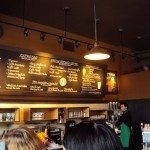
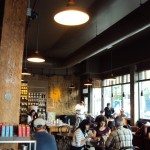
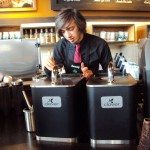
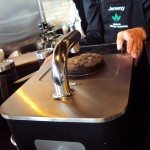
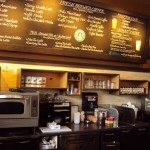



i REALLY wish I could give this one a try, but having just started a job after nearly 2 months of looking, I just don’t have the money 🙁 Let the taste sink in a little extra for me, Mel 🙂
I really enjoy having this coffee. I think my favorite part about it is that we get to offer something that’s just incredibly rare. We are carrying something that you aren’t going to get every day. It’s showcasing a great coffee. I for one am a huge proponent of that.
That sounds absolutely amazing!! Thank you for the post! I hope I have the pleasure of experiencing it someday, but it’s nice to learn about it regardless.
I really wish they had tastings like what you describe here in Southern California. Or, more specifically, in Orange County. It’s been years since I walked into my local Starbucks to find a French press with free samples. Peets still does this sometimes. The only time in recent memory that there’s been any sort of “tasting” was when Via was introduced. Yes, I took the challenge. Just like “New Coke” vs. “Old Coke.” I could tell then different then, too.
Melody, I would like to pass on a bit of feedback to you, to whom this may ultimately concern. I overheard a friend of mine telling another how it used to be when she went to Starbucks, she felt that in addition to getting coffee, she was purchasing some “real estate.” Meaning, that the comfy chairs, wonderful aroma and coffee house atmosphere were part of the overall experience. She said this while noting that that just no longer seems to be the case. I think she has a point. No real reason to linger, although the free WiFi may help. I say, bring back the aroma, comfy chairs, the eclectic (not corporate) music, tastings, live music and the honest-to-goodness baristas who are clearly passionate about coffee.
Not to mention a daily “bold” offering and decaf after 12 noon. I miss my “grande” drips, but I just can’t handle fully leaded anymore. Decaf Verona is wonderful. Decaf Sumatra is so good, that you can’t even tell it’s decaf.
Thanks for listening.
I agree with Pam. There haven’t been any coffee tastings at Starbucks here since the one they did in March. I’m extremely grateful that they did one at all (especially since it was from my rantings on MSI!) But, from what I’ve learned from you, you really need to attend more than one to really ‘get it’ and to keep your palate refined.
I wonder if we will have this coffee on the Gold Coast, Australia? Worth checking out, though it is understandably rare. That’s OK, I think we have some great local coffees here!
@Pam – that’s a good point – “purchasing real estate,” if only for a while. Obviously from a business point of view not really practical to have customers linger for long. But that’s what we want!
Anyway, re: the Jamaica Blue – will definitely have to track that one down!
Melody, you got very good experience. You have to buy a clover machine for your office.
This article has aroma of the Starbucks Jamaica Blue Mountain Coffee. Thank you.
I like menu boards of 1st & Pike, so I use that for wall paper of my Twitter. 😀
This is a great post! I haven’t had the chance to try it yet, but I’ll pick up Lois on the way home from the gym and we’ll stop in Seattle to have some.
Hi Melody!
Just wanted to give you the scoop on my Sbux happenings, as I think it’ll interest you. I’ve transferred to a new store that just underwent their 10-year remodel (it’s beautiful!), and we just reopened Tuesday (#8359, Bull and Broughton, Savannah, GA). In three weeks, we’ll be launching Clover in our store (Making it the 55th in the US, with the nearest Clover stores in Miami, FL and Boston, MA).
We have the machine in our store, but until all store partners have undergone Clover training, we can’t brew with it. I’m anxiously awaiting Blue Mountain (which my store manager says we’ll be receiving) and my mouth is watering for Iced Kenya — it’s the second hottest summer in Savannah history dating back to 1871!
Wishing you well,
SeventySix
@SeventySix – WOW WOW WOW!!!!!! Georgia is getting a Clover!!!!! That update was awesome!! Oh my god I want a trip to Georgia for the launch of the Clover. … Oh wow… Just looking at ticket prices. Not a cheap flight, Seattle to Savannah!
WoW! A Clover at a Starbucks in my own home state. I never thought I’d see the day 🙂 MUST make a road trip to Savannah!
$40 for a half pound of beans is somewhat steep…yet your description of Jamaica Blue has my taste buds reaching for my pocket book!
I also feel that your ending disclaimer or maybe I should say endorsement statment is the best one I’ve read in a while 🙂
Love it!
I really wish that there were a clover store near by, because I have the utmost need to try this roast. And you know, for Jamaica Blue, I’d say it’s worth it for $4.25 for a Short. I mean, if you’re going to spend nearly that much for a double Chocolate Banana Vivanno, might as well spend it on something much more rare to come by.
Melody the SB near me in NJ(not the one I frequent) just finished a remodel and was there today. They are not totally finished, but I have to say it left me sort of speechless because the changes were not leaving me with a wow factor except for the fact that they installed the clover!!! I asked one of the baristas and here too they can’t use it until they are trained. I found it interesting that she said her store gets a lot of business which is true and that is why they installed it. The store I frequent also gets a lot of business but has not clover. What is the marketing decisions in determining how a store gets clover? Anyway, I also found it interesting your statements re the FTC and bloggers. How often do you connect with pr folks at SB? And what do they actually think of your blog?
Melody,
Your readers might enjoy seeing images from the most prestigious of Jamaica’s Blue Mountain coffee plantations: Old Tavern Coffee plantation. Perched at 4,000 ft., in the clouds, this farm, owned by the Twyman family, is the most famous of all the Blue Mountain coffee growers.
Images and a brief blog are on my Web site, here: http://roberthart.com/blog/2009/04/
I routinely have this coffee shipped to me by Dorothy, the matriarch of the the Twyman clan and only share it here in my studio with my most hardcore coffee-aholics.
Ciao,
rhart
I love love love seeing the menu boards in your pictures! *drool*
@darkkatpouncing – I’m so glad you liked the legal section of the blog! hahaha!
@purple1 – One more thing: There will always be Starbucks blogs. If not me, others. This definitely is not the only Starbucks blog out there – Just look at the links in my blog roll. I just happen to be so close to them that it’s easier for them to get to know me.
True, things change. That’s life. The 1990s sure were fun, weren’t they? I had another Turkish Latte at Kean’s today . . . . .
Very well put Melody
I actually chose this as my breakfast coffee on friday when i could not find the shade grown mexican beans at the clover store in NYC, i got the citrus notes but not the chocolate.
I was excited to catch this post while checking stuff online tonight, I was wondering about the coffee I chose, thank you!
I would love to try Starbucks version of the Jamaican Blue Mountain. It’s one of my favorite regions. Can you please have them send some down to the Florida stores.
Melody- thanks so much for taking the time to respond to my question about your blog and SB. I really believe it is important you continue to blog and write what you do about SB. They need to see the other side besides the good also the bad. I really think the customer as they defined it has changed and need people like you to awaken them. Thank you thank you. Happy 4th!
The information on this blog was extraordinary! I’m a little late in commenting.
The barrel shipment is a very interesting fact!!! A local roaster does Jamaican Blue Mtn. But he always runs out of it quickly because of the high demand. Haven’t ever had the chance to try Mr. Clark’s JBM.
A customer came in a few days ago (iced grande, soy, no whip, mocha) asking about Jamaican Blue Mountain coffee because he wanted to buy some. I gave him the whole story about Clover stores and what-not. Turns out, he’ll be by the New York Clover location within the month! I’m pretty psyched that he gets to try it through a Clover!
And I very much agree with @CABarista! I stare at the menus in your pictures. It looks like the 1st and Pike store has white tea! Is that a test tea? Do they have full leaf white tea?
I love the look of this Starbucks inside…I think I like this one over most of the ones I have seen so far on your blog.
Oh my goodness!!! This coffee is SO good! I’m having it in a French press this morning but it’s screaming for some chocolate! LOL I’ll have to try it as espresso shots this afternoon with some dark chocolate. CAN’T WAIT! Thank you for sharing all the coffee information Melody, it’s so informative and helpful!
Wow – so many things to say here:
@Melody – thanks for such a great post. I made it to one of the 2 Clover locations here a few weeks ago but they did not have this coffee. If I get back there, hopefully they will have some left.
@Denise r – maybe we can meet up and try this one in the Schaumburg store
@SeventySix – I’m happy to hear you’re still at SBUX – I always enjoyed your enthusiasm and committment on SG
@RobertHart – thanks for the pictures and the worldly perspective on this special offering
to CD; I DID just this week have a venti! cup of the blue mountain at Streets…..(we should arrange that, to meet there). I thoroughly enjoyed it (the blue mtn) but nothing is as good to me as my beloved Yirgacheffe. It’s (Yirga) just so smoooothe….
@denise: I have a high hopes for this coffee, but I’m with you on the Yirgacheffe front. I’ll send you an email and maybe we can meet at the Streets soon (I like the job they did remodeling there, what do you think?)
I understand it’s really really rare coffee, but how do I get to try it. Where Can I go to buy it?
Hi Denitsa! I’m sorry to tell you but I’m fairly positive that this coffee has completely sold out. There wasn’t much of it, and it went fast from the stores. At this point, I don’t think you can buy it anymore. Coffee is a lot like a food. You harvest a crop from a farm, and when it’s gone, it is gone.
As per your recommendation, I recently tried Jamaica Blue Mountain coffee. I was very impressed with both the flavor and the body. Its well-rounded complexity made it worth the drive and the price.
http://tocoffeefromme.blogspot.com/2011/07/to-jamaica-blue-mountain.html
Thanks for the suggestion!
Only 1 thing matters, where can I buy a cup of Jamaican Blue Mountain Coffee???
Hi George – Welcome to this blog! If your ip address is right, you’re in a sun belt area of the country that really doesn’t have Clover Starbucks, or even Reserve stores. I think you might have to take a trip to California. I’m really sorry! It looks like starbucksstore.com isn’t selling JMB. There’s always ebay.
You can use the Starbucks store locator to try and find Clover stores. I have a list (see right side column, and scroll way down to popular posts) however my list is NOT complete and may be missing as many as 75 stores.
Thanks for coming by the blog. I hope you will “like” my site – You can click “like” on the right hand side facebook widget.
Thanks!
Melody